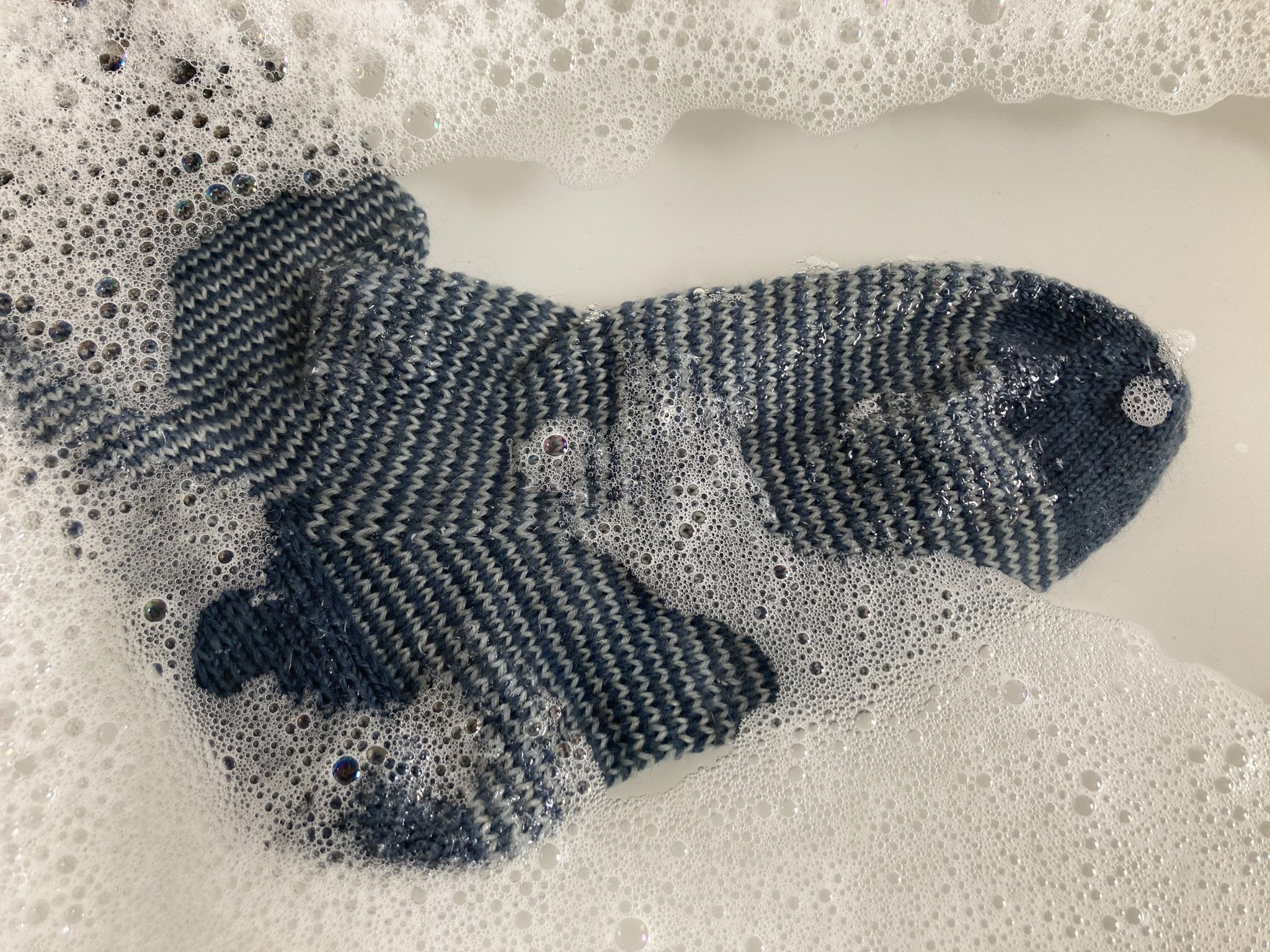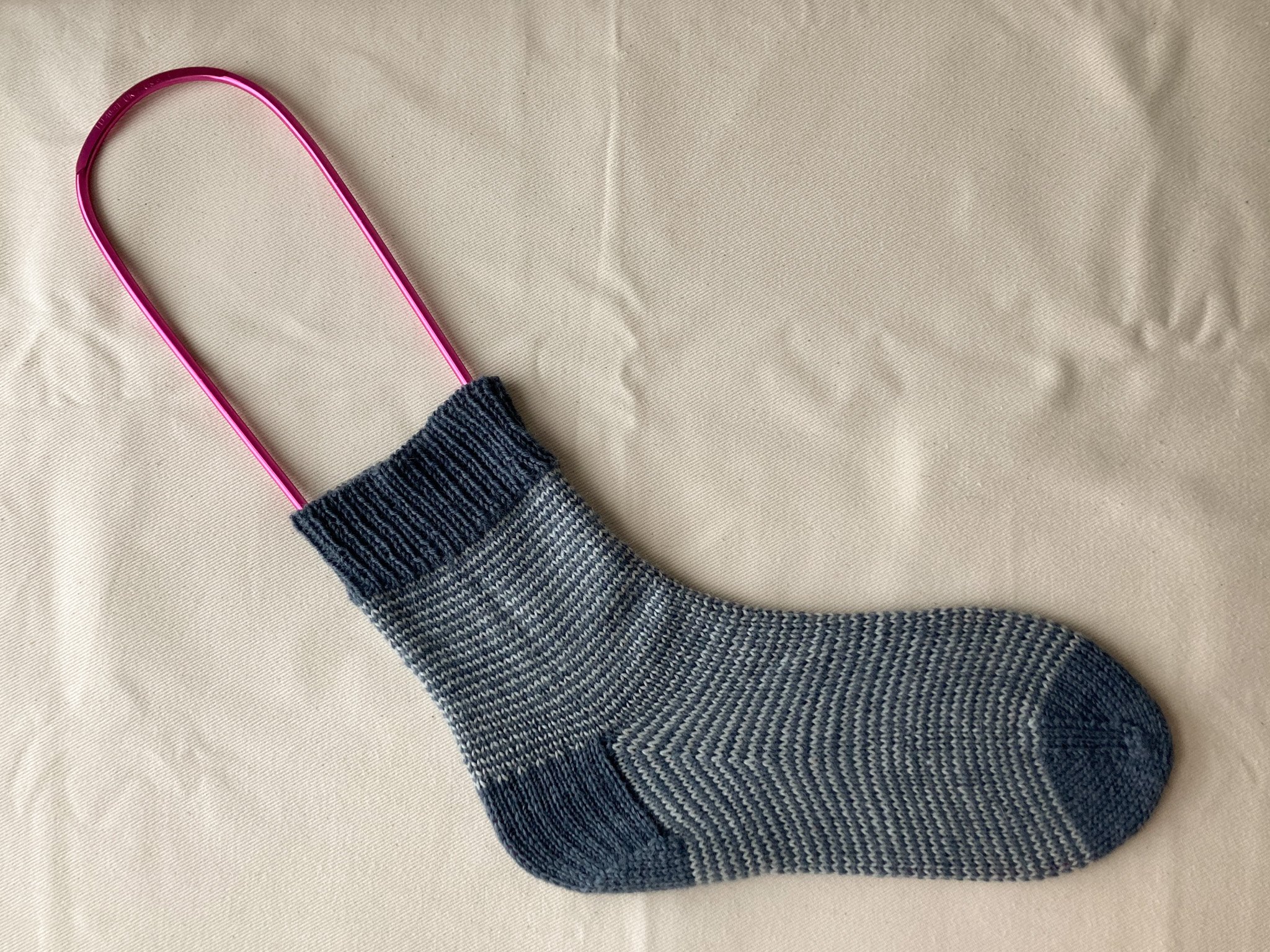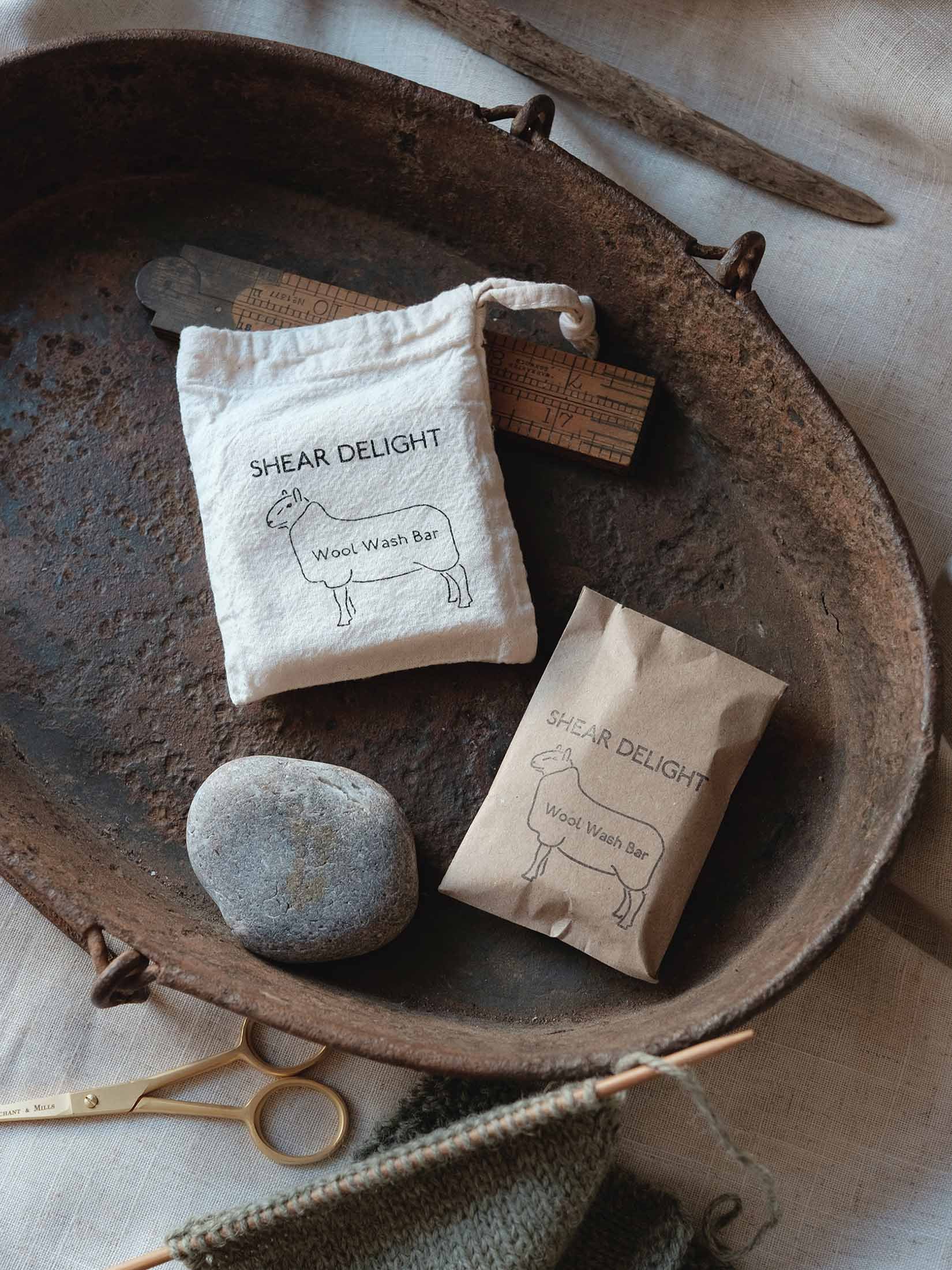How to Block Socks
Blocking is the final stage of knitting a pair of socks. It’s where the socks are soaked in water to let the yarn relax, and then dried over a shaped sock blocker. Blocking evens out stitches, opens up lace patterns and ensures the sock has a lovely neat shape.
Is Blocking Essential?
In a word, no. Socks will still work absolutely fine if you don’t block them. But blocking really does make them look neat and ‘finished’. If you knit socks as presents, or want to take good photographs of them, then blocking will make a real difference to their appearance.
The sock on the left has been blocked, and the one on the right has just come straight off the needles with no blocking.
Preparation
To block socks you will need some wool wash and a sock blocker (or a pair of sock blockers). You should weave in any ends and snip them off before blocking.
Method
Prepare a bowl of lukewarm water. I normally use my washing up bowl, but you could also block socks in the sink or bath, or any large bowl or pan. Add a little no-rinse wool wash, and pop the socks in to soak for twenty minutes or so. Leaving them for any longer won’t cause any problems.
Once the socks have had a bit of a soak, carefully remove them from the bowl and gently squeeze out any excess water. It’s really easy for the socks to become misshapen at this stage, so be careful not to wring them out, and try to support them evenly so they don’t stretch under their own weight. You could roll them up in a towel at this and squeeze the towel to remove most of the water.
Lastly, place the damp socks onto sock blockers and allow them to dry fully. I normally hang mine up in the airing cupboard, or by a window. Once they’re fully dry you can remove them from the blockers and they’re ready to wear (or gift).
Sock Blockers
I would definitely suggest investing in some sock blockers if you are planning on knitting any more than the odd pair of socks. There are plenty of different ones available, in a wide variety of materials, including wood, plastic and metal. I love these Pony metal sock blockers, as they are really minimalistic, not made of plastic, and they allow air to flow through my socks as they are drying. They come individually rather than as a pair, so I just have one and block my socks one at a time.
If you don’t want to invest in sock blockers just yet, then you could always try making some our of a metal coat hanger, of even a piece of cardboard. (there are lots of free tutorials and templates out there).
It’s still possible to block your socks without sock blockers - just shape them while damp and allow them to dry flat.
Washing Hand Knitted Socks
I use the method above to wash my hand knitted socks as well. Once they’ve been blocked once, they should return to their blocked shape each time you wash them, but I do dry my socks on blockers every once in a while just to make sure they retain their shape nicely.














